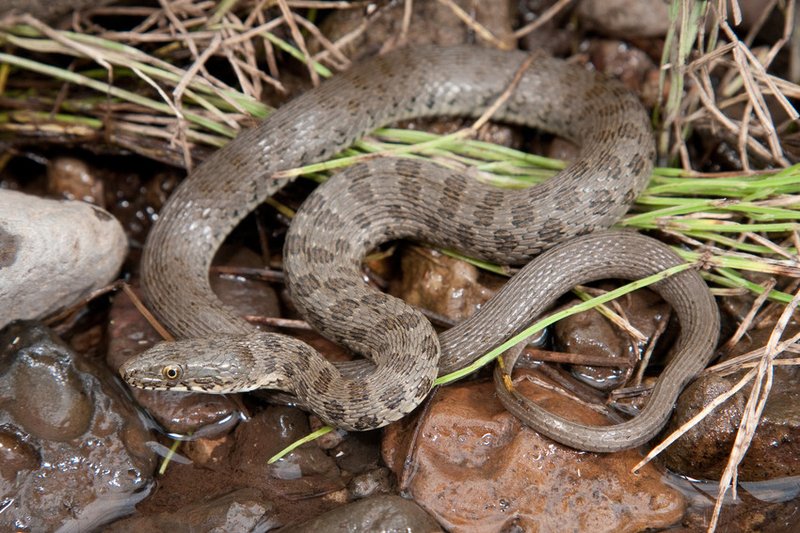For Immediate Release, October 20, 2021
|
Contact: |
Brian Segee, (805) 750-8852, bsegee@biologicaldiversity.org |
Imperiled, Fish-Eating Snake Gains 447 Miles of Protected Streams in Arizona, New Mexico
SILVER CITY, N.M.— In response to nearly two decades of scientific and legal advocacy by the Center for Biological Diversity, the U.S. Fish and Wildlife Service today protected 447 stream miles in the Southwest as critical habitat for the narrow-headed garter snake. That amounts to 23,785 protected acres in Arizona and New Mexico.
The snake is known for living almost its entire life in or immediately alongside water. The waterways now protected for the snake under the Endangered Species Act include 46 miles of the Gila River, 71 miles of the San Francisco River, 52 miles of the Blue River, 20 miles of the Tularosa River and 27 miles of the Verde River.
“Protecting these rivers will make a real difference for the narrow-headed garter snake,” said Brian Segee, endangered species legal director at the Center. “The only way to save these river-dwelling snakes is to shield the places they live.”
The final rule designating critical habitat for the narrow-headed garter snake follows the April designation of 217 stream miles (or 20,326 acres) of critical habitat for the northern Mexican garter snake, which is also aquatic but lives farther south and lower in elevation.
Both designations were much smaller than what the Service had originally proposed when it was considering the snakes for federal protection in 2013. For example, 1,380 stream miles would have been protected for the narrow-headed garter snake had that proposal been finalized — three times what was actually designated today.
Both garter snake species were listed as threatened in 2014. Both are disappearing as Southwestern streams are degraded by livestock and mining, upended by invasive species, drained for agriculture and suburban sprawl, and shrinking with global warming-induced drought.
Critical habitat designation requires federal agencies to consult with the Service when their actions may result in damage to or destruction of the habitat.
In August the Center reached a settlement agreement with the Forest Service requiring removal of chronically trespassing cattle from rivers and streams throughout the garter snakes’ ranges and beyond. These riparian areas were protected on paper because of previous Center advocacy for other imperiled species. But the Forest Service was turning a blind eye to hundreds of cattle trampling vegetation and defecating in streams where they are banned.
The Center first submitted a scientific petition to list both the narrow-headed and the northern Mexican garter snakes under the Endangered Species Act in 2003 and had to file multiple lawsuits before the Service listed both snakes in 2014. At the time, the agency had proposed protecting more than 420,000 acres of critical habitat for them, but it did not finalize those habitat protections until April of this year for the northern Mexican garter snake and today for the narrow-headed garter snake.
“Protecting rivers that disappearing animals rely on benefits snakes, fish, birds, amphibians and mammals, including people,” said Segee. “Protection should have come sooner for the narrow-headed garter snake. Now we have to focus on safeguarding and restoring our rivers to keep this snake swimming forever.”

The Center for Biological Diversity is a national, nonprofit conservation organization with more than 1.7 million members and online activists dedicated to the protection of endangered species and wild places.

